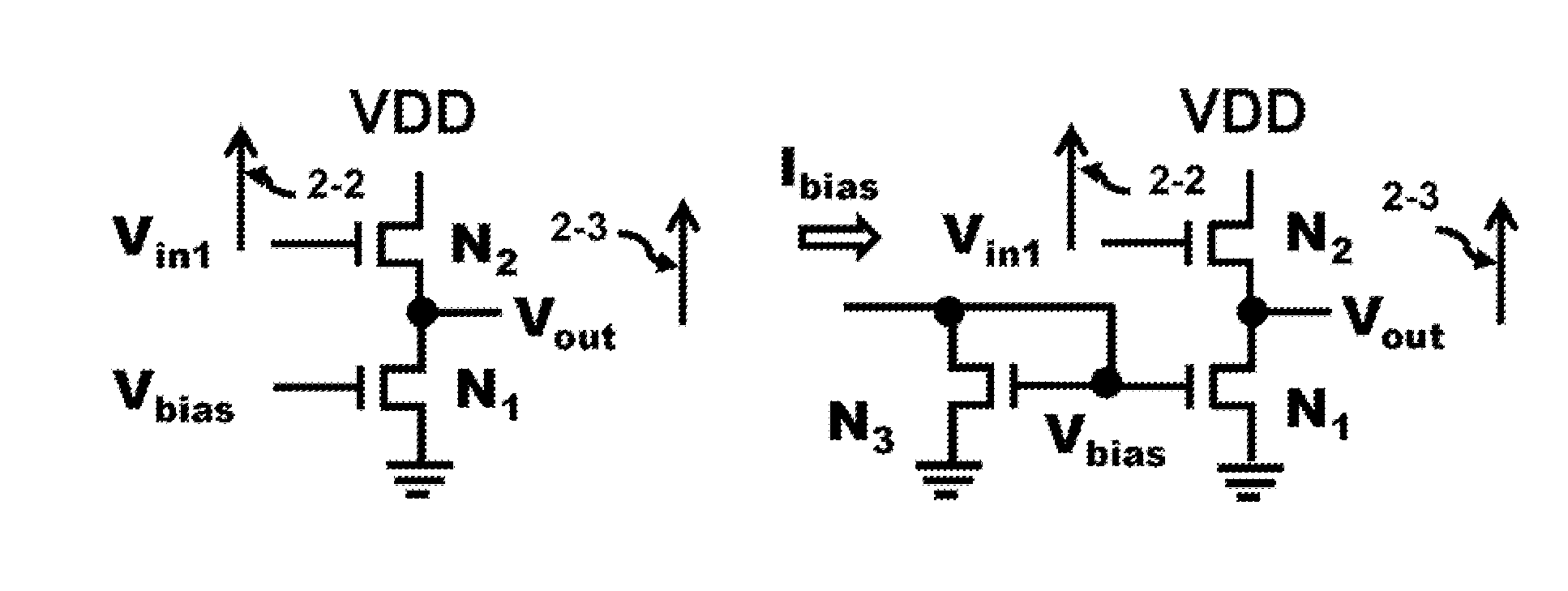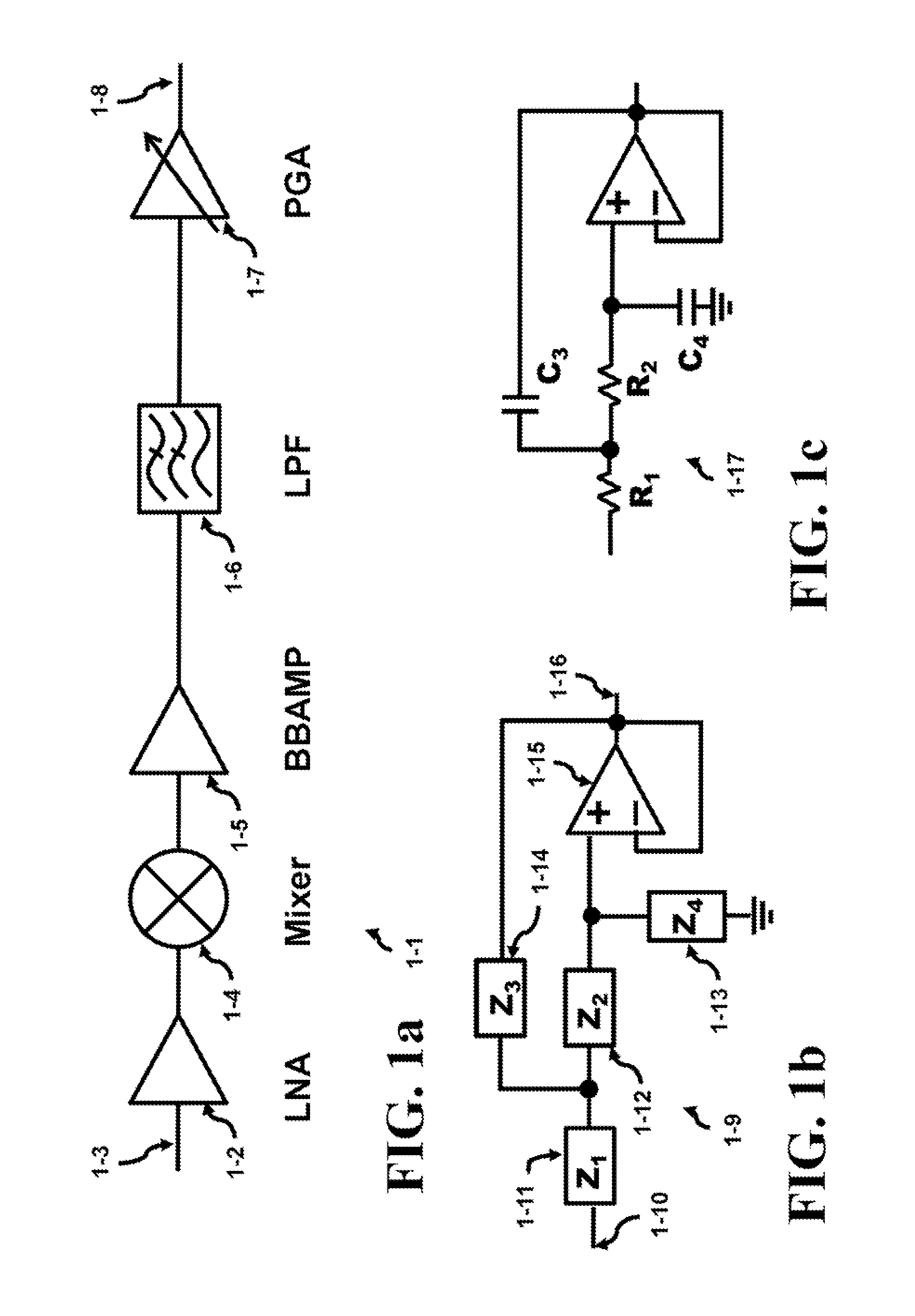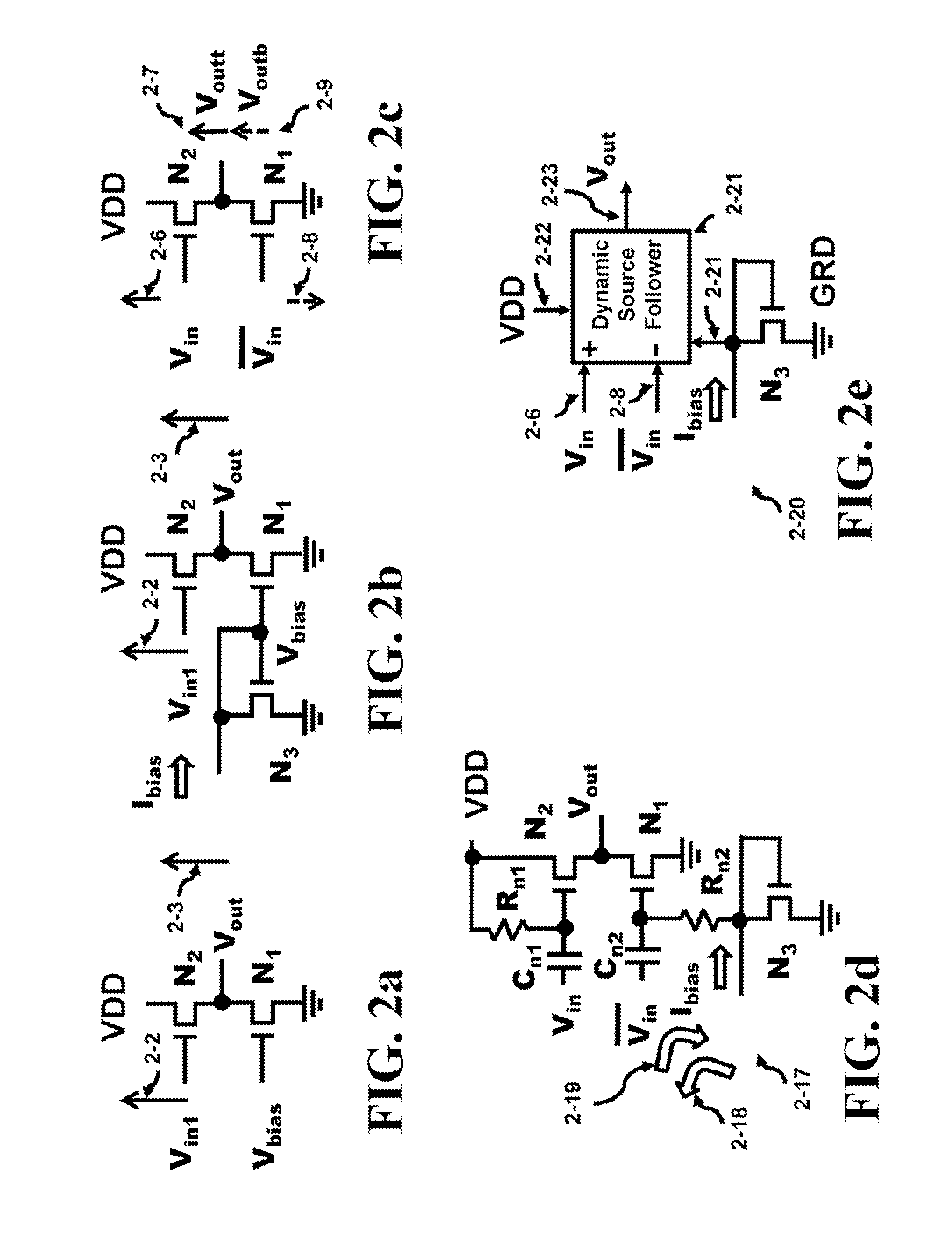Differential Source Follower having 6dB Gain with Applications to WiGig Baseband Filters
a technology of baseband filter and differential source follower, which is applied in the direction of pulse manipulation, pulse technique, instruments, etc., can solve the problems of much more difficult design of high-performance systems in low-power supply integrated circuits, and achieve high input impedance, good current drive, and extended high frequency behavior of filters
- Summary
- Abstract
- Description
- Claims
- Application Information
AI Technical Summary
Benefits of technology
Problems solved by technology
Method used
Image
Examples
Embodiment Construction
[0035]The inventions presented in this specification can be used in any wired or wireless high frequency system design. One application of the inventions can be applied to the front end of a receiver circuit 1-1 as illustrated in FIG. 1a. The Low Noise Amplifier (LNA) 1-2 can receive a weak signal at its input 1-3. This signal may have been be provided by an antenna or a wired line and is amplified by the LNA and applied to the Mixer 1-4. The CMOS design of an LNA at millimeter waves with a gain greater than 30 dB is very difficult. Afterwards, the signal is demodulated into a baseband signal. The baseband signal is amplified by the Base Band Amplifier (BBAMP) 1-5 and sent to the Low Pass Filter (LPF) 1-6. The LPF filters the signal and also provides an additional gain before the signal is sent to the Programmable Gain Amplifier (PGA) 1-7 which generates an output 1-8. In either case, the weak signal is amplified, demodulated, amplified, filtered and amplified as an output 1-8 befor...
PUM
| Property | Measurement | Unit |
|---|---|---|
| frequency | aaaaa | aaaaa |
| frequency | aaaaa | aaaaa |
| voltage gain | aaaaa | aaaaa |
Abstract
Description
Claims
Application Information
 Login to View More
Login to View More - R&D
- Intellectual Property
- Life Sciences
- Materials
- Tech Scout
- Unparalleled Data Quality
- Higher Quality Content
- 60% Fewer Hallucinations
Browse by: Latest US Patents, China's latest patents, Technical Efficacy Thesaurus, Application Domain, Technology Topic, Popular Technical Reports.
© 2025 PatSnap. All rights reserved.Legal|Privacy policy|Modern Slavery Act Transparency Statement|Sitemap|About US| Contact US: help@patsnap.com



